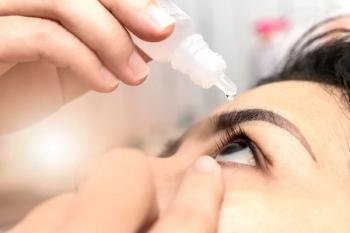
Hybrid contact lens technology just keeps getting better and better
Hybrid contact lens technology has existed for more than 30 years, and with each new wave of advances, its indications and market share have expanded.
Key Points
Seattle-Hybrid contact lens (CL) technology has existed for more than 30 years, and with each new wave of advances, its indications and market share have expanded, David L. Kading, OD, FAAO, FCLSA said. Dr. Kading, of Specialty Eyecare Group, Seattle, noted recently that hybrid lenses have some limitations, but with each new lens advancement, these limitations are shrinking.
Problems with earlier hybrid lenses included low oxygen permeability (Dk) and susceptibility to junction separation. In addition, they had limited indications and were somewhat problematic when fitting.
"The multifocal hybrid lenses are now made with more peripheral blending. The flattened [rigid gas-permeable] (RGP) periphery helps support and distribute the force of the lens more evenly onto the cornea, and the skirt is flattened to prevent scleral impingement," Dr. Kading said.
Regular shapes
The Duette is the most recently approved of the hybrid lenses for regularly shaped corneas. This lens is ideal for patients with astigmatism, myopia, and hyperopia but is not designed for patients with irregular corneas, Dr. Kading said.
"Think about this more to replace a toric lens or a myopic or hyperopic lens," he added. "It's going to be a great option for your [patients that wear] soft toric [lenses] who are not getting clarity of vision," he noted.
This lens may also work well for patients who are physically active but have experienced limitations with the fit of previous lenses and for patients who have been intolerant to gas permeable lenses. It also may work surprisingly well for first-time CL wearers, Dr. Kading noted.
The Duette lens has a silicone hydrogel skirt, which provides excellent oxygen permeability in the periphery. The skirt Dk is 85, which is 90% higher than that of the A. The hyper Dk in the RGP portion of the lens is 130. In addition, changes in the modulus decrease lens flexure, and the surface treatment increases wettability. The skirt/landing design has been altered to prevent seal off and simplify lens removal.
Newsletter
Want more insights like this? Subscribe to Optometry Times and get clinical pearls and practice tips delivered straight to your inbox.
















































.png)


